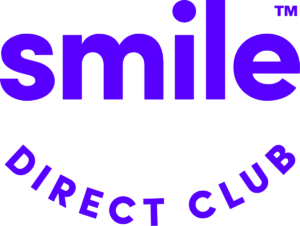The question ‘Does Cigna Dental cover Invisalign? is one that gets asked a lot on the internet.
Invisalign is one sure and safe way to deal with misalignment issues with your teeth to get a straighter and healthier smile. But the problem is, for most medical insurance plans, the dental part of the policy does not usually cater to orthodontic treatment.
One of the reasons why orthodontic treatment is hardly covered is the fact that it is usually more expensive than other dental treatments. Another major reason is that it is often considered to be a cosmetic treatment than a medical need.
Invisalign can be an expensive orthodontic treatment if you do not have insurance to help you out. Because of this, people who want to have orthodontic benefits are curious about Cigna Insurance. Cigna is one of the insurance companies that have their own specialized dental plans, making it a convenient choice for those who only want dental coverage.
But does Cigna cover Invisalign? In this article, we answer this question and give you a deeper look at what you can get from Cigna insurance.
Note – we are not qualified to comment on insurance policies and this page is only an overview and may not accurately represent a particular policy. Check your policy wording or consult a financial advisor to find out if a specific policy is right for you.
🥇 Why You Should Choose Byte

Best Value (4/5)
Plain and simple, Byte offers fantasic value for money against most competitors with the full treatment costing less than $2000.
Best treatment time (5/5)
Byte’s HyperByte vibration device cuts treatment time by almost half. Many customers complete treatment in just 5 months. Most dentists charge large extra fees for similar devices.
Generous Discounting (5/5)
Byte offers some great discounts through select partners like us. Claim your discount today and see how much you could save.
Insurance (5/5)
Cigna dental plans
There are three dental plans available with Cigna: Cigna Dental Preventive, Cigna Dental 1000, and Cignal Dental 1500. Among the three dental plans, Cigna Dental 1500 is the only plan that covers orthodontic treatment. So, if you want to get insurance for Invisalign, you should get Cigna Dental 1500.
Cigna Dental 1500
This dental plan is the highest level of dental coverage that you can get from Cigna. It covers check-ups, gum disease, cavities, and major dental works – including orthodontic treatment.
Braces and other orthodontic treatment (which includes Invisalign) are covered with a $1000 lifetime limit. Take note that the deductible and coinsurance are separate.
Restorative treatments are also covered with a limit of $1500 per year after deductible and coinsurance.
Under Cigna Dental 1500, you do not have to pay for preventive treatments as long as you get them from an in-network provider.
This dental plan can cost you as low as $35 per month per person. The deductible under this plan is $50 for individuals and $150 for families.
Is Invisalign covered by Cigna?
Yes, Invisalign can be covered as long as you get the Cigna Dental 1500 plan. Under this plan, Cigna will cover up to 50% of the Invisalign provider’s fee. This helps lower the cost of the popular orthodontic treatment significantly for you.
As mentioned above, orthodontic treatments under this plan have a lifetime maximum limit of $1000 for each person. If your Invisalign bill goes beyond that, you will have to pay for the rest out of your own pocket.
Take note also that Cigna Dental 1500 has limitations. For one, you will have to wait for at least a year before you can start using the benefits. So, if you are just getting the insurance now, you will have to delay your plans to get Invisalign for a year.
But if you already had a dental insurance plan for at least 12 consecutive months before you enrolled in Cigna, the waiting period for restorative care can be waived. Sadly, this does not apply to orthodontics.
The Cigna Dental 1500 is a flexible dental preferred provider organization plan. This gives you the freedom to see any dentist you want. However, you will be able to save more money when you go with a Cigna-affiliated dental professional.
Benefits of choosing Cigna
Convenient mobile app
Cigna has the myCigna platform, which is a mobile app that is very easy to use. The app shows your insurance ID card and also has your coverage details on display. You can also check your medical or dental insurance statements through the app. If you have no idea where to find an in-network dental professional, you can also use the app to help you out.
You do not have to submit the claims
Submitting claims can be a hassle. With Cigna, you do not have to worry about the paperwork. Everything will be handled by your Cigna provider. The only time you have to deal with paperwork is if you see a dentist that is out of network.
Online payments made easy
You can use the myCigna app to check your claims and bills. The app allows you to make online payments for a more hassle-free experience with Cigna.
See any provider you want
While most plans would limit you to their provider network, Cigna allows you to see an out-of-network provider. You do not even need to have a referral from an in-network provider to see one. But of course, you will be able to get greater coverage with in-network providers.
No open enrollment period
While most insurance policies have an open enrollment period to follow, Cigna does not have one. This means any time can be the perfect starting point for you to get Cigna insurance. All you have to do is comply with the waiting period before any treatment begins.
How to get Invisalign with Cigna
For you to enjoy insurance coverage for orthodontic treatments, you have to purchase the Cigna Dental 1500 plan, which is the only dental plan that caters to orthodontics.
You can get your individual plan from Cigna through their website. The best thing about it is that, unlike other insurance providers, you do not have to wait for an enrollment period to open up. You can apply for the dental plan any time of the year.
You also do not have to worry about where Cigna is accepted. Cigna is one of the largest dental insurance providers and is affiliated with over 93,000 dentists in 270,000 locations all over the country.
FAQs
What is Invisalign?
Invisalign is a popular orthodontic treatment that is used to treat crowded teeth, crooked teeth, tooth gaps, overbites, and underbites. The best thing about this treatment is that it uses invisible braces, which saves you from having to endure the “metal mouth” look that is usually associated with metal braces. The treatment is more discrete, making it the preferred treatment for adults.
How does Invisalign work?
Invisalign straighten teeth gradually with the help of clear aligners that are not only removable but are also transparent. The reason why it is so popular is because of its barely-there appearance.
The Invisalign aligners should be worn for at least 22 hours per day. This must be strictly followed if you want to get your desired results in the projected timeline that your Invisalign provider planned. If not, there will be a delay and your treatment time will have to extend. You might even have to pay for additional Invisalign clear aligners.
And do not think that you can cheat and lie about how long you have been wearing the clear aligners. The clear aligners have a blue dot located in the back part, where it will not be visible. The blue dot fades over time as you wear it. If the blue dot is still visible on the time you are supposed to move to the next set of clear aligners, it means that you have not worn them in the required number of hours.
Invisalign patients will be doing regular office visits to Invisalign providers throughout the treatment. The Invisalign clear aligners are replaced from time to time to help achieve your straighter smile.
Once you have completed your treatment with Invisalign clear aligners, you will be required to wear a retainer for 24 hours for the first few months. Then, you will be wearing the retainers while you sleep at night for the rest of the time. The retainers are a must to ensure that your teeth will not shift back to its original position.
Do dental insurance cover Invisalign?
This greatly depends on the type of insurance you have and your insurance provider. If you are referring to the usual medical insurance that you get from work, chances are orthodontics will not be covered so you can’t use that for Invisalign.
Most medical insurance plans do not consider Invisalign as a medical need. They are deemed as a cosmetic treatment and because of this, they are not covered. That is unless you prove that it is a medical necessity that you get Invisalign treatment.
If you have a lot of dental needs, you should shell out money and enroll in a dental insurance plan. These dental plans will most likely have a package that offers orthodontic benefits which you can use to help pay for Invisalign.
How much does Invisalign cost without dental insurance?
The cost of Invisalign greatly depends on how much treatment you need. This is why if you check their website, they do not give a specific price. Instead, they give hypothetical examples of what monthly payments could be like. Examples that they have given in their website are average cost of $50 per month for 36 months and $125 per month for 24 months.
The total cost of Invisalign without orthodontic coverage can cost you anywhere between $3000 and $7000. Since Invisalign charges on a case-to-case basis, there is a possibility that you will be paying higher or lower than that range for your treatment plan.
In this part, the pricing concept is similar to that of metallic braces where the more work you need, the higher the cost will be. The only way to know for sure is to see an Invisalign provider and have an assessment done.
How much can dental insurance cover when it comes to Invisalign?
The amount of insurance coverage you will be getting for an Invisalign treatment will depend on the insurance provider.
Some dental insurance plans can cover 25% to 50% of your Invisalign bill. Many dental insurance plans, some providers have a lifetime limit for their orthodontic benefits. Lifetime limits usually costs $500 to $1500.
Also, you should know that most insurance providers will only do reimbursements. So, you still need to find ways to shell out the cash to pay for the total amount in the meantime.
To be sure about how your insurance provider will handle your orthodontic coverage and what orthodontic options you can get, it is best to contact a representative to discuss your benefits and how to get covered.
What affects the cost of Invisalign?
The total cost of Invisalign treatment will depend on several factors. Here is a list of the major factors involved:
The complexity of the orthodontic treatment
As mentioned earlier, the more work you need, the more expensive Invisalign will get. More work means a longer treatment time and using more Invisalign trays. But if you have a mild orthodontic issue, everything will be shorter and cheaper.
If you need refinements or extra support
Complex cases need extra support or refinements. Extra support like attachments is sometimes needed to force your teeth to move if the invisible trays are not enough. Refinements are needed if you have reached the end of your treatment and you still need more work. All of these will mean additional costs, increasing your total Invisalign cost.
Invisalign provider
Invisalign has a point system for the dental providers associated with them. Those who are in the highest tiers have the right to charge more for their expertise. On the other hand, being in the highest tier also means they get significant discounts that they can pass on to their patients.
Location
The cost of living in your area will affect the overall pricing of your Invisalign treatment. Urban and suburban areas usually have a higher Invisalign cost compared to rural areas. In the USA, California and New York are some of the states that have the highest Invisalign treatment costs. Meanwhile, you can find the lowest Invisalign treatment costs in the southern states.
Is Invisalign cheaper than braces?
This depends on the severity of your case. If you only have a mild orthodontic issue to fix, Invisalign treatment can be cheaper than traditional braces. But if you are getting treatment for moderate to complex cases, there is a huge chance that Invisalign can be more expensive than metal braces. Another reason why Invisalign may cost more than metal braces is the lab costs involved in making the Invisalign aligners.
What are other ways to pay for Invisalign aside from insurance?
HSA or FSA
You can use your health savings account (HSA) or flexible spending account (FSA) to help cover the cost of Invisalign.
Payment plans
You can ask your Invisalign provider if they have payment plans that allow you to do monthly installments for the orthodontic treatment. Some providers may also be offering dental discount plans that you can take advantage of.
Third-party credit or loan companies
You can also borrow money from credit or loan companies for your dental treatment.. It is similar to a monthly payment plan but takes note that this option usually comes with high interest. Credit checks are usually required as well.
Are there other affordable Invisalign alternatives?
Now that you have an idea of how much Invisalign costs and how much insurance can cover you, some of you may think that you can’t afford the treatment even with insurance. The good news is that there are more affordable Invisalign alternatives that you can do and most of these are at-home treatments.
If you are looking for cheaper invisible braces, here are some brands that you should check out and their estimate costs:
- AlignerCo = $1145
- Byte = $1895 (day aligners); $2295 (night aligners)
- Candid = $2400
- NewSmile = $1195
- SmileDirectClub = $1950 (day and night aligners)
Is Invisalign worth it?
When it comes to straightening your teeth, there is no doubt that Invisalign aligners work. It is definitely worth the investment. Having straighter teeth does not only improve your looks. It is also good for your dental health. Aside from that, it can also boost your self-confidence. Remember, your smile is a huge reflection of you and it is one of the things that attract people towards you. Your smile is one of the best ways to make a strong first impression.
Conclusion
Invisalign is the leading invisible braces brand in the market today. The brand has a good reputation, the material being used is high quality, and they have a roster of celebrities to vouch for their stellar service. For a brand that has such a high reputation and good reviews, it’s just understandable that it comes with a high price tag too.
People often get intimidated when they find out how much an Invisalign treatment costs but as you can see, things can get to be more affordable with the help of dental insurance – especially if you only have a mild issue to address.
A dental insurance that cover orthodontics is an insurance that can cover ceramic braces, traditional braces, and Invisalign. While not all dental plans covers orthodontics, Cigna Dental 1500 stands out and you should use it to save money on orthodontic services.
If you are looking for an insurance provider that can cover most of your dental procedures and Invisalign treatment, Cigna may be the best insurance company for you. Getting the Cigna Dental 1500 is a worthy investment that you can make when it comes to improving your teeth and maintaining good oral health.





